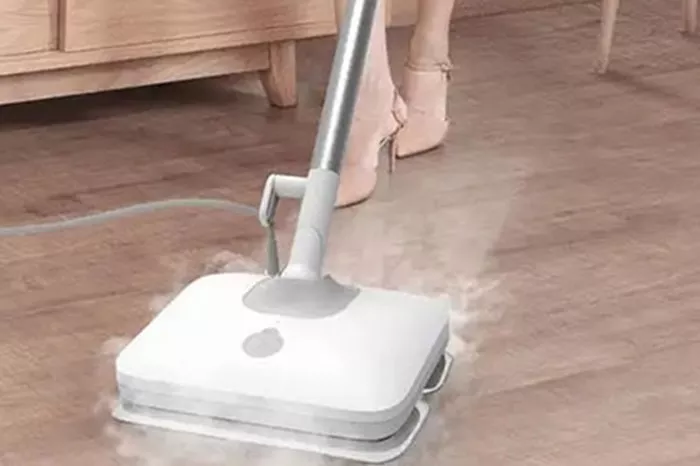Steam mops have gained popularity as a cleaning tool due to their ability to sanitize surfaces using high-temperature steam. However, when it comes to wood floors, there is a lot of debate about whether steam mops are safe to use. This article will delve into the specifics of how steam mops work, the potential risks they pose to wood floors, and provide professional recommendations for maintaining wood floors without causing damage.
Understanding Steam Mops
How Steam Mops Work
Steam mops use heated water to produce steam, which is then applied to the floor surface through a mop head. The high temperature of the steam is effective in killing bacteria, dust mites, and other allergens. The mop head is usually made of microfiber, which helps to trap dirt and debris as the steam loosens them from the floor.
Types of Steam Mops
There are various types of steam mops available in the market, ranging from basic models to advanced ones with adjustable steam settings. Some steam mops come with additional features like detachable handheld units for cleaning upholstery and other surfaces.
The Nature of Wood Floors
Composition of Wood Floors
Wood floors are made from natural wood, which can be either solid wood or engineered wood. Solid wood floors are made from a single piece of wood, while engineered wood floors consist of multiple layers of wood veneers. Both types are susceptible to moisture and temperature changes.
Sensitivity to Moisture and Heat
Wood is a hygroscopic material, meaning it absorbs and releases moisture based on the surrounding environment. Excessive moisture can cause wood to swell, warp, or even crack. Similarly, high temperatures can dry out the wood, leading to shrinkage and gaps between the planks.
Potential Risks of Using Steam Mops on Wood Floors
Moisture Damage
One of the primary concerns with using steam mops on wood floors is the potential for moisture damage. Even though steam mops use less water compared to traditional mops, the high-temperature steam can penetrate the wood’s surface, leading to swelling and warping over time.
Heat Damage
The high heat generated by steam mops can also be detrimental to wood floors. Prolonged exposure to high temperatures can dry out the wood, causing it to lose its natural oils and leading to cracks and splits.
Finish Damage
Most wood floors are coated with a protective finish, such as polyurethane or wax, to protect the wood from scratches and stains. The heat and moisture from steam mops can break down these finishes, leaving the wood vulnerable to damage.
Professional Recommendations
Manufacturer Guidelines
Always refer to the manufacturer’s guidelines for both your steam mop and wood floor. Some wood floor manufacturers explicitly advise against using steam mops, while others may provide specific instructions on how to use them safely.
Alternative Cleaning Methods
Dry Mopping: Use a microfiber mop to remove dust and debris without using any water.
Damp Mopping: Use a slightly damp mop with a wood floor cleaner. Ensure the mop is well-wrung to avoid excess moisture.
Vacuuming: Use a vacuum with a soft brush attachment to remove dirt and dust.
Proper Maintenance
Regular maintenance can help preserve the integrity of your wood floors:
Use Rugs and Mats: Place rugs and mats in high-traffic areas to reduce wear and tear.
Control Humidity: Use a humidifier or dehumidifier to maintain optimal humidity levels (30-50%) to prevent wood from expanding or contracting.
Immediate Spill Cleanup: Clean up spills immediately to prevent moisture from seeping into the wood.
Case Studies and Expert Opinions
Long-Term Use of Steam Mops
A study conducted by a leading wood floor manufacturer found that homes using steam mops on wood floors over a period of five years showed significant signs of wear, including warping and finish degradation. The study concluded that while steam mops are effective for sanitizing, they are not suitable for long-term use on wood floors.
Expert Opinion
Flooring specialists generally advise against using steam mops on wood floors. They recommend using cleaning methods that minimize moisture and heat exposure to preserve the floor’s integrity. According to experts, the risks of moisture and heat damage far outweigh the benefits of using steam mops on wood floors.
Related Recommendations
In summary, steam mops are not recommended for wood floors due to the potential for moisture and heat damage. By understanding the nature of wood floors and the risks associated with steam mops, you can make informed decisions about how to best care for your flooring. Always prioritize methods that protect the integrity of your wood floors, ensuring they remain a beautiful and lasting feature in your home.
Conclusion
While steam mops are effective cleaning tools for many surfaces, they pose significant risks to wood floors. The combination of moisture and heat can lead to swelling, warping, and finish damage, compromising the longevity and appearance of your wood floors. It is essential to follow manufacturer guidelines and consider alternative cleaning methods to maintain the beauty and durability of your wood floors. Regular maintenance and proper care will ensure that your wood floors remain in excellent condition for years to come.
Related topics:

